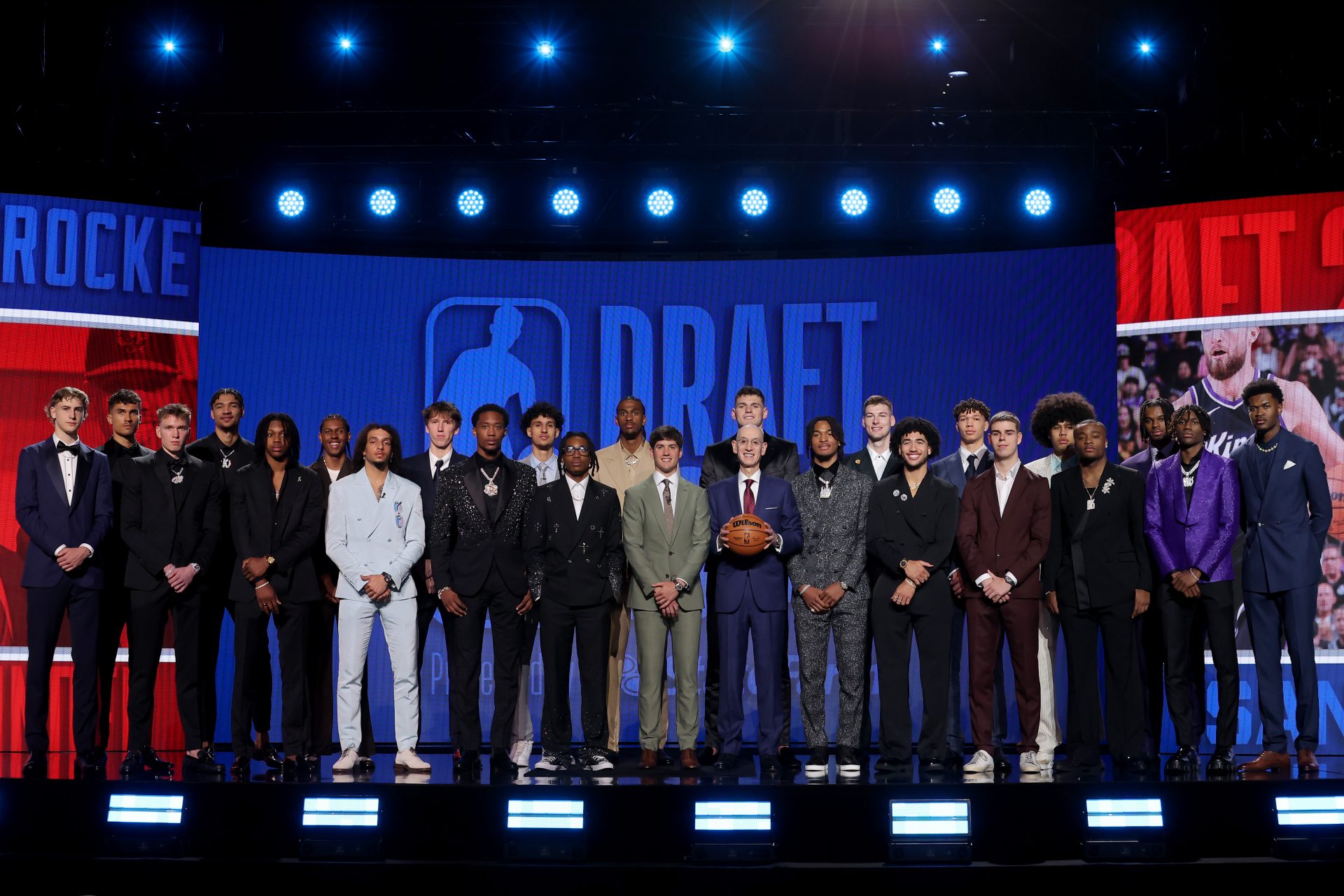The 2025 NBA Draft has shattered expectations with just 106 early entrants declaring, marking the lowest total in a decade. This seismic shift represents a stunning reversal from the post-COVID peak of 353 players in 2021, signaling fundamental changes in how elite basketball talent navigates the path to professional careers.
Name, Image, and Likeness (NIL) opportunities have revolutionized collegiate athletics, creating a financial landscape in which many players find staying in school more lucrative than risking uncertain draft positions.
This unprecedented situation has far-reaching implications for both the NBA talent pipeline and college basketball’s competitive ecosystem.
How Many Early Entrants Were There in the 2025 NBA Draft?
The NBA officially announced 106 players filed as early entry candidates for the 2025 NBA Draft, scheduled for June 25-26 at Barclays Center in Brooklyn. This represents a dramatic decline from 195 players last year and an even steeper drop from 242 the year before.
For context, early entrant numbers peaked at 353 declarations in 2021, making 2025’s figure the lowest since 2015.
Only 106 players entered the 2025 NBA Draft, per the NBA. That’s the lowest number of early-entrants since 2015, down from a peak of 363 in 2021, just before the NCAA’s NIL era officially started.
Incredible boon for college basketball to retain so much talent. pic.twitter.com/SSnXEqMrRJ
— Jonathan Givony (@DraftExpress) April 29, 2025
Despite reduced quantity, top-end talent remains exceptional. Duke’s Cooper Flagg stands as the consensus projected first overall selection after a freshman campaign that earned him the Wooden Award and National Player of the Year honors.
Rutgers guard Dylan Harper (19.4 points, four assists per game) and Texas guard Tre Johnson form the next tier of highly coveted prospects, with Harper praised as potentially “the best scorer in this draft.”
Why Were 2025 NBA Draft Early Entrant Numbers Down?
The primary driver behind this historic low is college basketball’s transformed economic reality through NIL deals. Many borderline NBA prospects who might have previously tested professional waters are now earning guaranteed seven-figure NIL incomes while remaining in school.
This fundamentally alters the risk-reward calculation when compared to the uncertainty of two-way NBA contracts worth approximately $600,000 next season.
Several college programs now design their NIL deals with specific conditions that block players from exploring the NBA draft. If players test the draft waters, they risk losing their lucrative college paydays, creating a powerful financial incentive to stay on campus.
This approach has further suppressed early declaration numbers as players commit to collegiate programs with guaranteed compensation.
Another contributing factor is the waning impact of COVID-19 eligibility waivers. Last year, 55 of 195 early entrants held extra NCAA eligibility from the pandemic-affected 2020-21 season. This year, only five early entrants remain from the COVID waiver era, indicating college basketball’s natural progression beyond this temporary eligibility expansion.
Why Low 2025 NBA Draft Early Entrants Matters
The historically low early entrant pool creates significant strategic challenges for NBA front offices, particularly those holding selections outside the lottery. Teams with picks in the 40s are expressing genuine concern that those selections may hold little value in this talent-starved environment.
Even teams selecting in the late 20s and 30s question whether those picks will deliver the typical return on investment expected from those draft positions.
This talent shortage is especially concerning because the 2025 draft class was already considered somewhat weak in depth. NBA teams across the league have expressed serious doubts about the overall quality of this draft class. Many scouts believe the talent drops off significantly after the first couple of picks.
The diminished early entrant pool has only exacerbated these concerns, potentially making this one of the shallowest drafts in recent memory and forcing teams to reevaluate their talent acquisition strategies.
The financial implications extend beyond team planning to player decision-making as well. Players on the bubble between lottery selection and late first-round status now face compelling financial motivation to improve their draft position with another collegiate season.
The difference between being selected 20th versus 4th equates to approximately $13 million in guaranteed money over two years, a significant incentive that’s reshaping career trajectories.
KEEP READING: 2025 NBA Mock Draft 1.0: Cooper Flagg & Dylan Harper Headline a Star-Studded Draft Class
For college basketball, this trend represents a transformative windfall. Programs retain more top-tier talent, substantially improving the overall quality and star power of the collegiate game. Florida’s 2025 national championship team exemplifies this advantage, powered by Walter Clayton Jr., who returned for a second year with the Gators.
This isn’t merely a one-year anomaly but potentially the beginning of a new normal in basketball talent development.
As the NIL marketplace matures and players become increasingly sophisticated in managing their professional trajectories, the resulting talent stratification, with only the most elite prospects declaring early, could fundamentally reshape both the NBA draft process and college basketball’s competitive landscape for years to come.
College Sports Network has you covered with the latest news, analysis, insights, and trending stories in college football, men’s college basketball, women’s college basketball, and college baseball!


